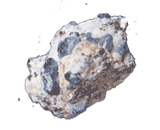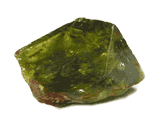| Gemstone Chart |
 Natural Sapphirine Natural Sapphirine
Sapphirine is a rare mineral, a silicate of magnesium and aluminium.Though Sapphirine clearly falls into the "rare stone" category, it is a relatively durable stone with a Moh's hardness of 7.5. Sapphirine's very distinctive appearance along with their somewhat unusual durability have made them fairly popular with collectors.
Color: Pale blue, bluish gray, greenish gray, green, purplish pink
Categories: semi-precious stone
Crystal Group: Monoclinic
Refractive Index: 1.714-1.723
Hardness: 7.5
Density: 3.4-3.5
Occurrence: U.S.A., U.K., Sweden, Czechoslovakia, Japan, South Africa, Greenland, Madagascar, Italy, Sri Lanka
|  Natural Sphene Natural Sphene
Sphene is also known as calcium titanium silicate.It is named from the greek word for wedge, because of its typical wedge shaped crystal habit.Because of it's high dispersion and refractive index, a well cut sphene can display stunning brilliance. Sphene is somewhat soft and as a result is more suitable as a pendant than as a ring stone. Sphene is rarely very clean.
Color: Green, yellow. brown
Categories: semi-precious stone
Chemical Composition: CaTiSiO5
Crystal Group: Monoclinic
Refractive Index: (1.885-1.990,)-(1.915-2.050)
Hardness: 5.5
Density: 3.52-3.54
Occurrence: Austria, Dheirene-Madagascar, India, USA, Brazil.
|  Natural Triplite Natural Triplite
Triplite is a rare fluoro-hydroxide phosphate mineral that forms in phosphate rich granitic pegmatites and high temperature hydrothermal veins. The name is from the Greek triplos for triple, in reference to the three cleavage directions. It is a very gemstones and few cut stones have been ever reported.
Color: brightly coloured (brown, salmon, flesh-red)
Categories: semi-precious stone
Chemical Composition: (Mn,Fe2+)2(PO4)(F,OH)
Crystal Group: Monoclinic
Refractive Index: 1.650 - 1.680
Hardness: 5 - 5.5
Density: 3.44 - 3.90
Occurrence: the Shigar Valley, Pakistan; China; France, Bavaria, Germany; Kimito, Finland; Karibib, Namibia; Maine, and Connecticut, Arizona and Colorado in the United States.
|
|
